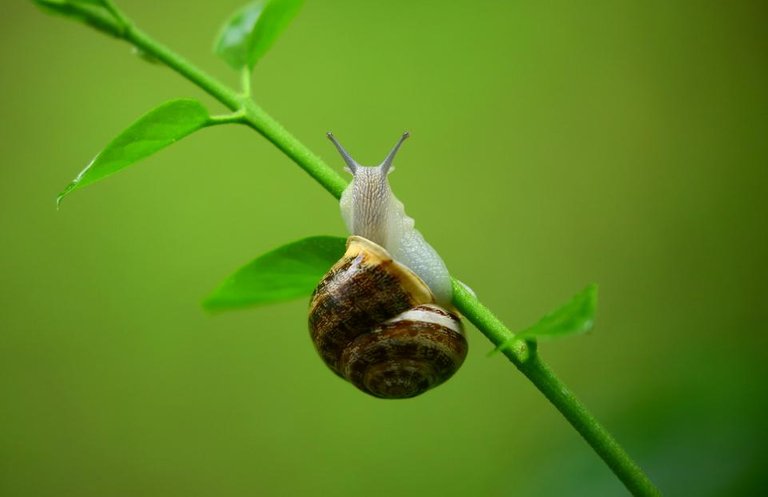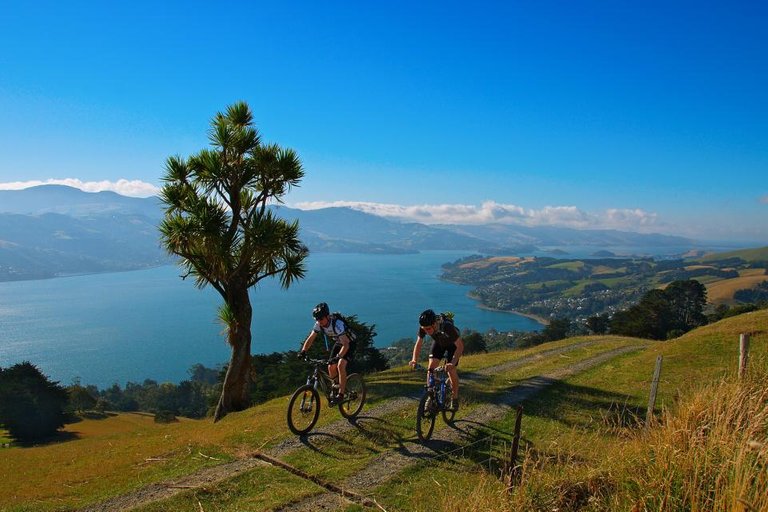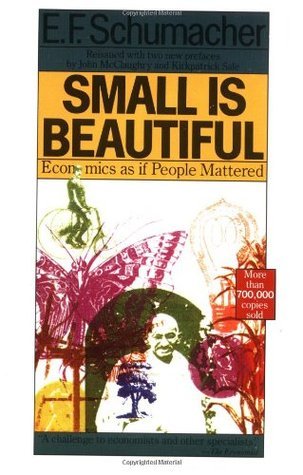
In a world where bigger equals better, and faster is more, it is a radical notion to focus on the small and the slow. Why would you, if you could have it bigger and faster? The answer to this should be (hopefully) quite obvious. Let's consider an example that has no doubt already crossed the mind of some readers: A car!
Suppose I gave you the option between two cars to chose from (which I would give you for free): a small compact car, or an SUV. Clearly, the obvious choice is the SUV, until you consider gas mileage, parking spaces, and general city traffic. Certainly, it all depends on your given conditions and your needs. Maybe gas is really cheap where you live. Maybe you don't have to deal with city commutes. Maybe you need to haul big things. Lots of a times having a big vehicle is perfectly reasonable. Lots of other times it's not. But this example is just scratching the surface.
How about no car at all?
When discussing this point in his book Permaculture Principles and Pathways, David Holmgren mentions bicycling or walking as opposed to driving. Their advantages should be obvious: you get to experience the world you're passing through with all your senses, you smell the air, you feel the ground under your feet, you can stop and enjoy the scenery. All things you would miss out traveling inside a car or a train.

Or let's take completely unrelated examples, such as romance: A long and elaborate courtship is more likely to become a lasting and more fulfilling relationship than a quick and rapid conquest. Sure, maybe not for everybody, just like in the case of the SUV. Though Milan Kundera's book Slowness talks precisely about this, suggesting that it may apply to many of us.

Finally, to use an example close at hand, the growth of any business, game, or whatever is in between, such as Steemit. As nice as it felt to see a reward of 250 bucks for my third post, ultimately it raised my expectations way beyond what's reasonable, making even a decent $12 payout feel disappointing. Instead, it is much nicer to see gradual growth and appreciate the small increases.
But what do romance and steemit rewards have to do with my garden?
Permacultue, as we need to keep in mind, is not only about gardening, but includes the entire scope of our existence and day-to-day activities. However, to stay in the garden for a bit, let's consider its obvious advantages compared to huge industrial-scale farms. Sure, the yield of a small backyard is obviously limited by its size. On the other hand, it is clearly more flexible, more diverse, and much more independent than an industrial plot of monocrop, which by its nature relies on machines (plus fuel, parts, etc.), chemicals (their production, application, and subsequent health treatment), and a huge supply network, balanced market prices, just to mention the most obvious things. Keeping all this in mind, it comes as no surprise to see articles like this one, describing how small scale organic gardening (as it's common in Russia and many other places) is the most efficient way to provide food, looking at all pros and cons.
Consider the Cell
One of the most ingenious inventions of nature is the cell. Instead of growing bigger and bigger, it kept the basic building block at a small size. Together these individuals would form a network as a tissue, which in turn could perform other functions. Big enough to offer a sufficient complexity, a cell is still so small that it takes a multitude of them to perform any function. They are individual, autonomous beings, who live, act according to their needs and circumstances, and eventually die. Being so small, the death of one individual will not affect the organism as a whole. On a larger scale, isn't this just like a vast network of small organic gardens?
Beauty is Having the Right Scale

At this point I'd like to bring up E.F. Schumacher's famous book Small is Beautiful. Contrary to what the title indicates, he does not advocate small per se. Instead, he emphasizes the right scale, meaning human scale. This way it is not the industry, the economy, or the company whose needs are prioritized over that of ours, as it is too often the case. It is rather humans who can design systems for themselves (and each other) that will be geared to fulfill their needs, while still considering the needs of others (humans, nature, resources, …) in a way that is just as flexible, autonomous, and complex as we like. No more, no less.
Examples, more examples:
Instead of theorizing around much more, here are some concrete examples for slow and small:
- Milling lumber – The example mentioned in my post about Vancouver Island: turning local resources into construction material on site using a mobile sawmill versus relying on industrial-scale infrastructure.
- Electricity – Off-grid power to supply a home with all its energy needs versus a huge centralized electric network, with overland lines, one big power plant, massive input of resources, energy loss and outright waste...
- Business – Keeping the size of the enterprise small also keeps it manageable. This way growth occurs naturally, one can adjust to it more easily, and most of all, it remains independent of borrowed money.
- Learning – Out of my own experience I can say that “intensive, full-immersion” courses of a short period can be highly effective in learning a language (or other skills for that matter). Unfortunately, they also tend to have the least long-term effects.
- Weight loss – In the same way to learning, a super diet where you lose a great deal of weight in a short time almost guarantees that you'll gain it back in a short time, as you fall back into the same old habits. Slow and gradual change, as a result of regular exercise and a permanent change in diet, tends to have more lasting results.
Sources: 1, 2, 3, 4, Pics: 1, 2
To see my discussions of other Permaculture Principles, take a look at these posts:
Permaculture: A Starting Point
David Holmgren
- Observe and interact
- Catch and store energy
- Obtain a yield
- Apply self-regulation and accept feedback
- Use and value renewable resources and services
- Produce no waste
- Design from patterns to details
- Integrate rather than segregate
- Use small and slow solutions
- Use and value diversity
- Use edges and value the marginal
- Creatively use and respond to change
Bill Mollison
- Work with nature, not against it
- The problem is the solution
- Maximum effect for minimum effort
- The yield of the system is theoretically unlimited
- Everything gardens
nice!
A very informative post,
Thank you, much appreciated!
HolySmoke! Way to go.. tying Permaculture into the everyday practices..
...which is exactly what I believe Permaculture is supposed to do: emulate patterns of nature in our culture.
Thanks @stortebeker for another interesting read and providing practical examples. And thanks again for the book recommendation in case you did not see my post: https://steemit.com/economics/@contemplate/sometimes-happiness-lies-in-simple-things
No I didn't, gonna check it out right away.
I'm just noticing that once you got more than a hundred people you follow, it becomes increasingly difficult to actually follow. So thanks for the link!
I have the same problem. In the last 2 weeks I have been going through each 'following' and I tried to unfollow many as I could as I simply followed the follower when I joined. I would view a few articles each to see if there was unique content and particularly a sense if I would learn something, I know there are cases where I made refollow some. Unfortunately, because of time, I am not able to follow too many people as well but I do want to tailor it such that I catch most of the articles I am interested in.
I think it doesn't really matter. I also followed only people I was genuinely interested in. But those people are also interested in many other things (naturally) that are less interesting to me. Plus there are all these re-steems, posted by yet others, that leave me completely cold. Among all these posts the real interesting stuff gets buried deeper and deeper. I guess one thing you could do is actually follow a person, that is looking up their profile page periodically. That's what I've started doing. Though in the meantime there are new followers and interesting people to follow....
Great work!
Thanks! :-)